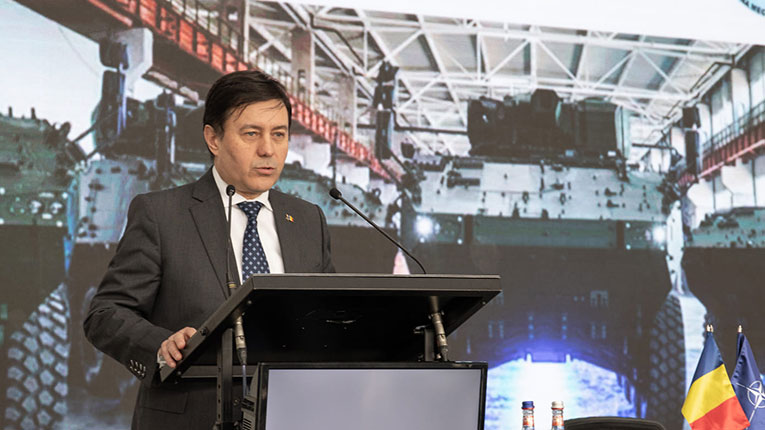Economy Minister Florin Spataru met on Friday with Ford of Romania President Josephine Payne and other members of the company’s management to discuss solutions the car industry can implement to overcome the semiconductor crisis and dependence on critical materials in Europe, as well as the opportunities offered by the transition to electromobility, reveals a release received by Energynomics.
“Today I had the opportunity to continue the excellent dialogue with the management of Ford, at an extremely important moment for both the company and Craiova. I am very confident in the plans for the factory in Craiova under the leadership of Ford Otosan, once the transfer of ownership is completed. The plant in Craiova aims at an electric future, and the transition to electro-mobility is an important objective that I, as Minister of Economy, support with all my efforts,” says Florin Spătaru.
Josephine Payne, President of Ford Romania, claims that Ford Craiova is going through its best period, despite the difficulties related to semiconductors and the war in Ukraine and is preparing the transition to electrification.
“This visit once again confirms the close partnership between Ford and the Romanian Government and marks another important step towards building a stronger future for the local car industry. During today’s visit we took the opportunity to inform Minister Spataru about how our activity is changing and about the challenges facing our industry today.
“Despite the current context, we are focusing our efforts on the bright future of the Craiova plant, which will continue to play a key role in Ford’s plans to create a fully electric sustainable future. The process of transferring ownership from Ford to Ford Otosan is ongoing and, as mentioned earlier, we expect it to be completed in the third quarter, ”says Josephine Payne.
In parallel, the Craiova plant is preparing to launch in 2023 and 2024, respectively, the production of three new models: Ford Transit Courier and Ford Tourneo Courier (both produced in electric and internal combustion variants), as well as the fully electric Ford Puma.
“Romania has a significant production in the automotive industry, where we have the two big factories and also a very well developed horizontal industry. In the end, the car industry generates over 24% of Romania’s GDP,” adds Minister Spataru.
During the visit to the Ford plant there were discussions about solutions that could be implemented to reduce supply chain bottlenecks and opportunities and challenges for the future development of the plant.
On March 14, Ford announced that the Ford Otosan joint venture will take over the Ford plant in Craiova, starting with the third quarter of 2022, following a transfer of ownership.
Ford said it had invested about 2 billion euro in Craiova and produced one million vehicles and more than 1.5 million engines since its takeover in 2008.
The fact that Ford Otosan will be the new owner of the factory in Craiova will help the transfer of know-how, through the vertical integration of electrical technologies and will have an extensive and cost-effective effect on the network of suppliers.

